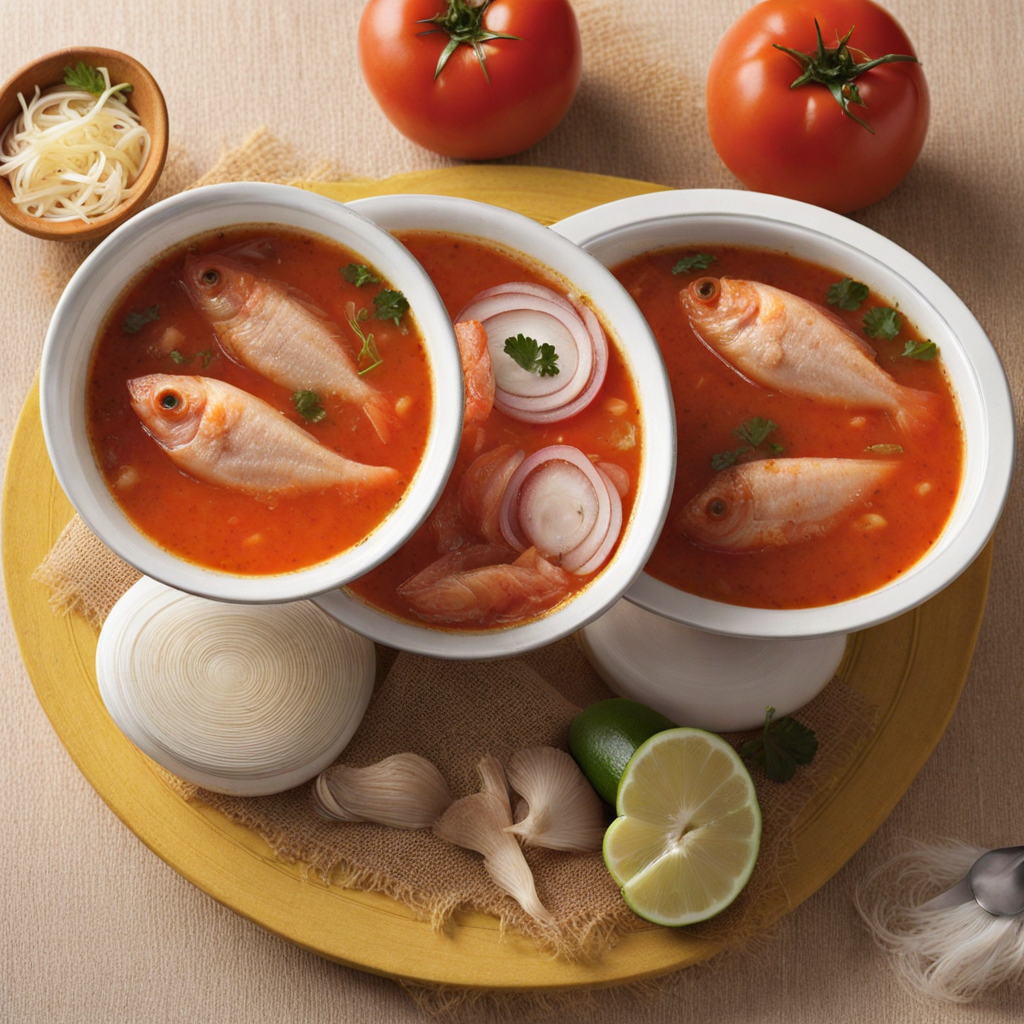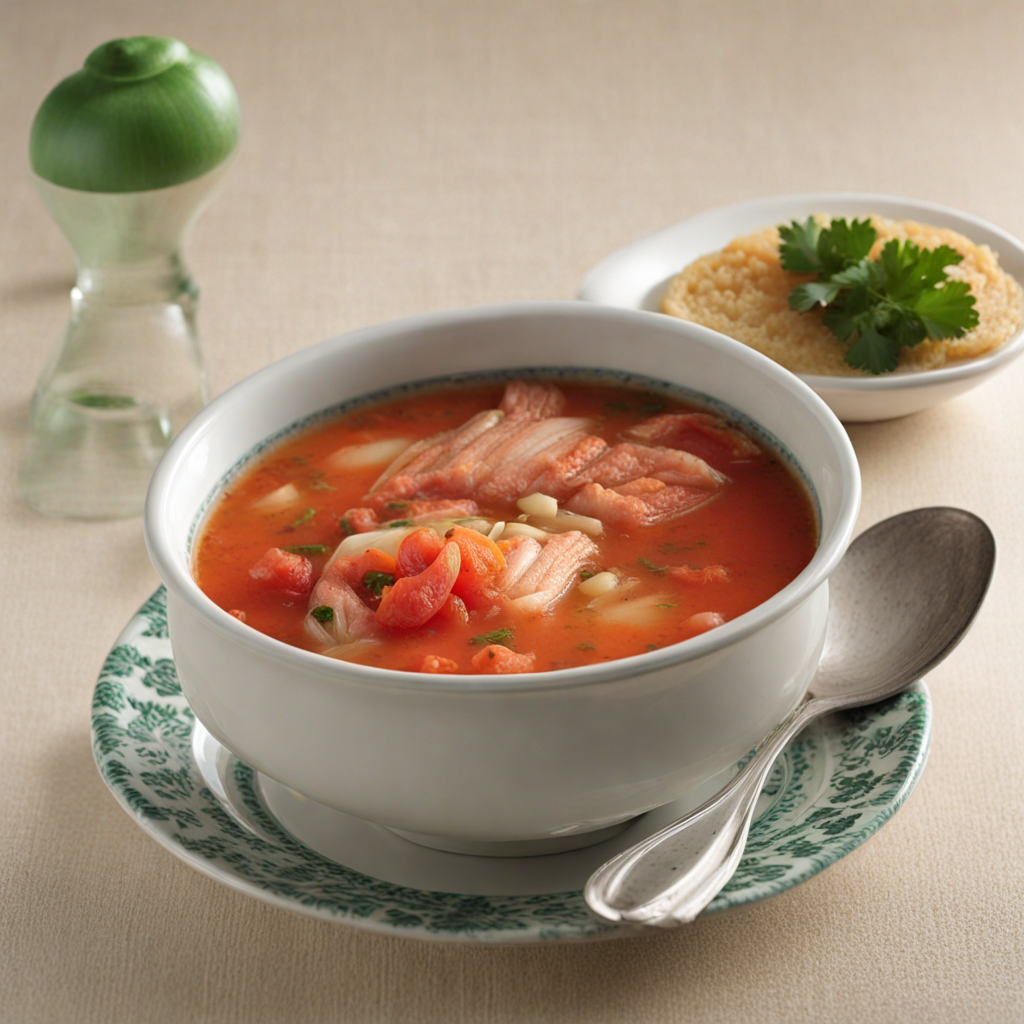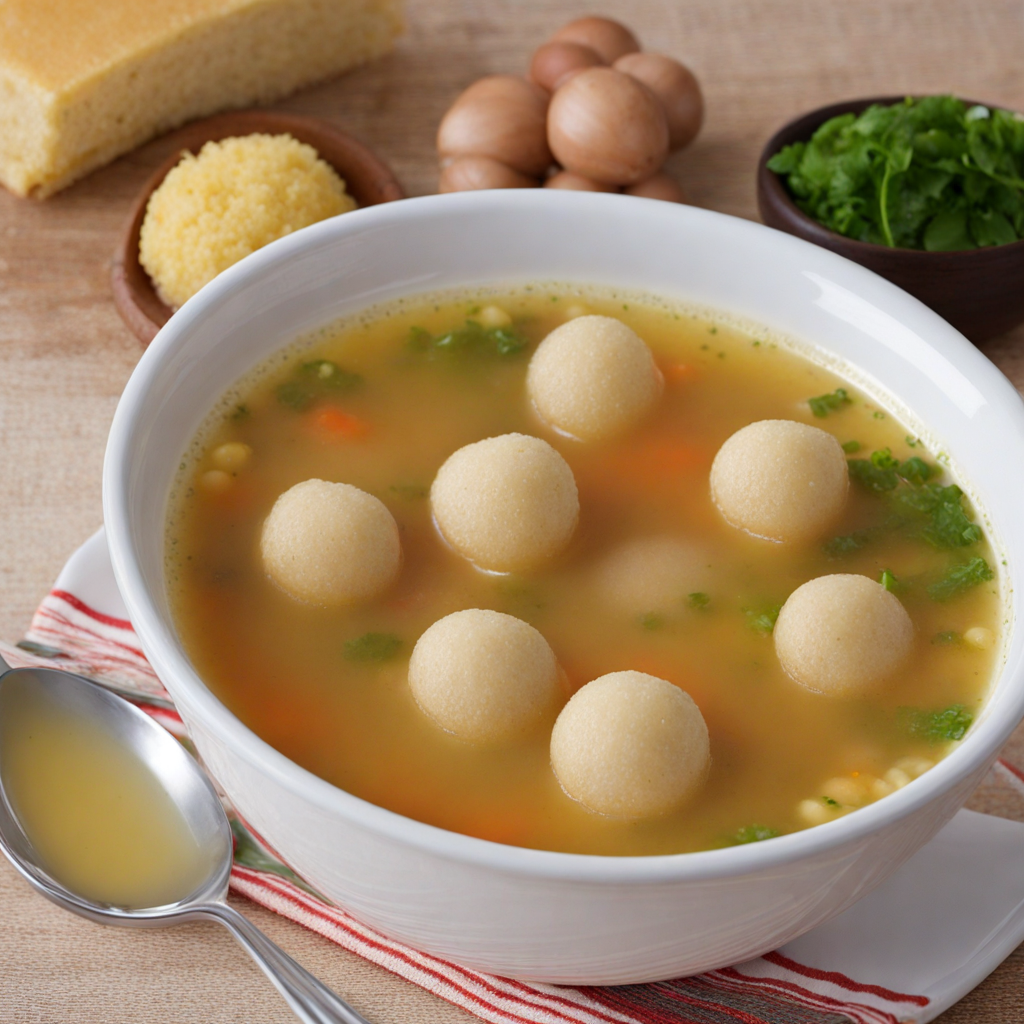Pira Caldo
Pira Caldo is a traditional Paraguayan dish that embodies the rich culinary heritage of the country. This fish soup is particularly popular in the regions where the Paraguay and Paraná rivers flow, as these waterways are abundant with freshwater fish. The name "Pira Caldo" translates to "fish broth," and the dish is deeply rooted in the fishing traditions of the indigenous peoples and early settlers of Paraguay. It serves as a testament to the local ingredients and the communal way of life that revolves around fishing and gathering. The flavor profile of Pira Caldo is both rich and comforting, offering a delightful balance of fresh fish essence and aromatic spices. The broth is typically infused with the natural sweetness of the fish, complemented by a medley of vegetables and herbs. It has a slightly spicy undertone, which can vary depending on the cook’s preferences and the recipe used. The dish is often served hot, making it a perfect meal for cooler weather or after a long day of fishing. The overall taste is a harmonious blend of savory and earthy notes, with a hint of acidity that brightens the dish. Preparation of Pira Caldo is a labor of love that involves several steps. Traditionally, the soup starts with a base made from sautéed onions, garlic, and peppers in a large pot. Once the vegetables are softened, water is added to create the broth. Fresh fish, typically species such as surubí or dorado, are then introduced to the pot, allowing their flavors to meld with
How It Became This Dish
The History of Pira Caldo: Paraguay's Culinary Gem Pira Caldo, a traditional fish soup from Paraguay, is more than just a dish; it is a cultural emblem that reflects the rich culinary heritage of the region. This hearty and flavorful soup, known for its unique blend of local ingredients and cooking techniques, has deep roots in the history of the Paraguayan people and serves as a testament to the country’s natural resources and indigenous traditions. #### Origins of Pira Caldo The name "Pira Caldo" translates to "hot fish" in Guarani, the indigenous language of Paraguay. This dish has its origins in the indigenous communities that have inhabited the region for centuries. The Guarani people, whose culture is closely tied to the rivers and forests, were adept at fishing and foraging, making fish a staple in their diets. The Paraguay River, which runs through the country, teems with various fish species, providing a bountiful resource for local communities. Historically, Pira Caldo was prepared using the simplest of ingredients. The indigenous people would catch fish from the river, typically species such as piranha, surubí, or pacú, and combine it with roots, vegetables, and herbs, many of which were sourced from the surrounding forests. Cooking techniques often involved simmering the fish with these ingredients in clay pots over open fires, a method that not only infused the broth with flavor but also preserved the nutritional value of the fish. As European settlers arrived in the 16th century, they brought new culinary influences and ingredients, such as onions, garlic, and various spices. Although these changes introduced different flavors and techniques, the essence of Pira Caldo remained intact, rooted in the indigenous practices of the Guarani. #### Cultural Significance Pira Caldo is more than just a meal; it is a symbol of Paraguayan identity and communal life. The dish is often prepared for family gatherings, celebrations, and religious events, serving as a centerpiece that brings people together. Sharing Pira Caldo reflects the importance of community and hospitality in Paraguayan culture. Traditionally, the preparation of Pira Caldo is a communal activity. Families gather to fish, prepare ingredients, and cook the soup together, reinforcing social bonds. The dish is often served with a side of "mbeyú," a traditional Paraguayan cassava pancake, or accompanied by "sopa paraguaya," a cornbread-like dish. Together, these elements create a hearty meal that is both nutritious and satisfying. Moreover, Pira Caldo has also found a place in the broader cultural narrative of Paraguay. It is often featured in festivals and events that celebrate the nation's culinary heritage. For instance, during the "Fiesta Nacional de la Cocina Paraguaya," Pira Caldo is highlighted as a traditional dish that embodies the flavors of Paraguay. Such events not only honor the food but also educate younger generations about their culinary legacy. #### Development Over Time While Pira Caldo has remained true to its roots, it has also evolved over time, adapting to modern tastes and cooking practices. In the early 20th century, as urbanization began to sweep across Paraguay, the dish started to appear in restaurants, moving from home kitchens to public dining spaces. Chefs began to experiment with the traditional recipe, introducing new techniques and ingredients that appealed to a broader audience. One notable development was the incorporation of various types of fish into Pira Caldo, influenced by the globalization of food culture. While the classic preparation typically uses piranha or pacú, many modern recipes now include tilapia or even imported fish, reflecting changing availability and consumer preferences. This adaptation has allowed Pira Caldo to remain relevant in a rapidly evolving culinary landscape while still honoring its historical roots. Furthermore, contemporary chefs have embraced the farm-to-table movement, emphasizing the use of fresh, locally sourced ingredients. This approach has led to a resurgence of interest in traditional recipes, as chefs seek to create authentic dishes that highlight Paraguay's natural bounty. As a result, Pira Caldo has become a staple in many upscale restaurants, where it is served alongside fine wines and innovative culinary presentations. In addition to its evolution in the culinary scene, Pira Caldo has gained international recognition. As Paraguay continues to promote its cultural heritage, the dish has appeared in food festivals and culinary competitions outside the country, drawing attention to Paraguayan cuisine as a whole. This exposure has sparked interest in culinary tourism, with visitors traveling to Paraguay to experience the country’s unique foods, including Pira Caldo. #### Conclusion Pira Caldo is a dish that encapsulates the spirit of Paraguay—a blend of indigenous traditions, communal values, and modern influences. Its rich history reflects the resilience and adaptability of Paraguayan culture, as it has evolved from a simple sustenance for indigenous peoples to a celebrated symbol of national identity. As Paraguay continues to navigate the complexities of globalization and cultural exchange, Pira Caldo stands as a reminder of the importance of heritage and the enduring power of food to connect people across generations. In today’s world, where culinary traditions are often overshadowed by fast-paced lifestyles and globalized flavors, Pira Caldo serves as an invitation to pause and appreciate the stories behind our meals. Whether enjoyed in a humble home or a fine restaurant, this traditional fish soup remains a cherished part of Paraguay’s culinary landscape, inviting all who savor it to partake in the rich tapestry of history, culture, and community that it represents.
You may like
Discover local flavors from Paraguay







